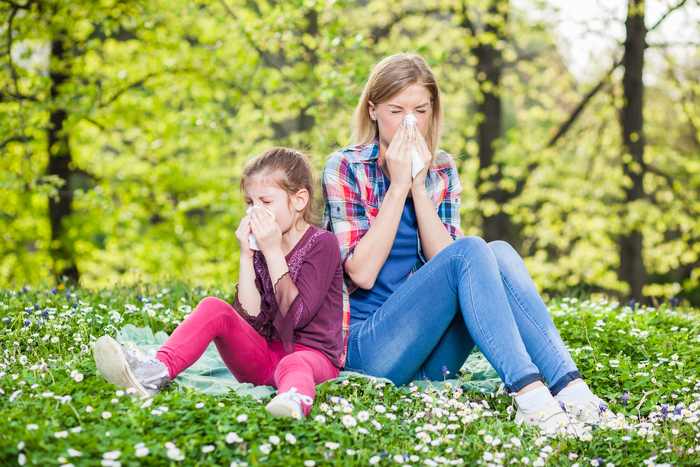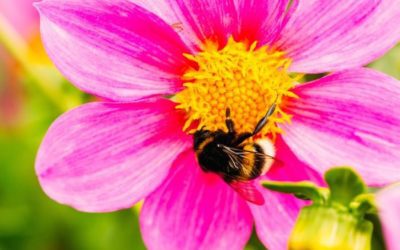ALLERGIC RHINOSINUSITIS: WHAT IS IT?
Allergic rhinosinusitis is an increasingly common disease. The mechanisms that contribute to the inexorable increase in the number of allergic patients are many and varied. An allergic reaction is a dysfunction of our immune system and can make you sick anyone and at any age. The intensity of symptoms seems to decrease when you are getting older. This disease corresponds to an inflammation of the mucous membrane of the nasal cavities and sinus cavities. This inflammation is secondary to joint stimulation of our sensory nerves and our system immune by multiple factors. Inflammation of the lining of the pits nasals is always accompanied by that of the sinuses and vice versa, we will therefore speak still rhinosinusitis.
WHY ARE HUMANS PROGRAMMED TO BREATHE THROUGH THE NOSE?
How does it work normally? In a normal situation, the nose is an interface between our environment and inside our body. A healthy adult breathes 14,000 to 18,000 liters of air per day.
The nasal organ has an essential protective role for our respiratory system. Despite its small size, it is a very effective breathable air conditioner. When breathing through the nasal cavity, the air is warmed, humidified, and cleaned as in a filter. Over 90% of inhaled particles are trapped as they pass through the mucus layer covering the lining of the nose nasal. This mucus is like a treadmill in constant motion towards the throat thanks to the beating of the cilia on the surface of the cells that constitute the nasal mucosa.
This self-cleaning system is however very brittle. If inflamed, it quickly loses its effectiveness. Besides its role important in the conditioning of inspired air, the nasal mucosa is also an organ particularly sensitive to all irritants that may be present in our environment. The endings of the Olfactory nerve allow us to smell the smells that surround us. The sensitive fibers of the trigeminal nerve can detect stimuli mechanical, thermal, or chemical We can consider the nose as an alarm system that protects the lower respiratory tract from inhaling potentially hazardous substances.
IS ALLERGIC RHINOSINUSITIS A COMMON DISEASE?
Yes, it is estimated that this disease affects around 25-30% of the population. Most epidemiological studies have shown that the number of individuals who suffer from allergic rhino-sinusitis had significantly increased over the past 30 years, especially in developed countries and industrialized. The number of people in whom the disease has occurred over the course of a year has increased by about 4 times in 30 years. Rhinosinusitis allergic can be divided into two main groups: rhinosinusitis seasonal or periodic, usually secondary to an allergy to pollen, and perennial allergic rhinosinusitis (present all year round). Seasonal allergic rhinosinusitis is the most common. Several symptomatic patients seem to depend on pollen concentration in the air. Symptoms of allergic pollen rhinosinusitis appear to be aggravated by air pollution. Allergic rhinosinusitis seasonal may appear already before school age, but it is more common during teenagehood. Seasonal allergic rhinosinusitis, as well as conjunctivitis (eye inflammation), and seasonal asthma, rarely appear after the age of 35, especially if the affected person stays in the same region geographical. In general, symptoms decrease with age and are rare after sixty. Perennial allergic rhinosinusitis affects around 5 to 10% of the population. Symptoms are usually quite rare before the age of 3. The people most affected are between 15 and 30 years old. The number of new patients and the intensity of symptoms seem to decrease gradually after the age of 35. Rhinosinusitis perennial allergy is frequently associated with bronchial asthma. It is important to note that around 70 to 80% of patients with asthma have allergic rhinosinusitis perennial. On the other hand, around 50% of patients with Perennial allergic rhinosinusitis have bronchial asthma.
WHAT ARE THE CHARACTERISTIC SYMPTOMS?
Inflammation is the basis of allergic rhinosinusitis. The first symptom that appears is usually pruritus (itching or tingling) that is felt in the nose, sometimes in the mouth, in the eyes, and sometimes ears. This itching is usually followed by sneezing and then a discharge of profuse watery secretions. Finally, nasal obstruction appears which may be accompanied by headaches and mucus discharge from the back of the nose that is associated with burning or itching in the throat.
WHAT TO DO IF I SUFFER FROM RHINOSINUSITIS?
The investigations may be performed by the primary care physician (pediatrician, generalist, or internist) in collaboration with specialists in allergology, pneumology, or specialists in otolaryngology (ENT) who also have training in allergology. Their role is to identify the allergen(s) responsible for the disease.
The identification of these allergenic substances will be done mainly by a detailed interrogation, in particular on the time of year in which appear symptoms and characteristics of the affected person’s environment. The questioning will be followed by allergy skin tests which currently represent the most sensitive method for making the diagnosis. These tests are painless and may be achieved in children, even from the first year of life. We can also take a blood test to determine if the presence of total IgE is greater higher than average and check for the presence of type E immunoglobulins (IgE) specific to certain allergens.
It is sometimes very useful to combine allergological investigations with an examination of the nasal cavity. This examination is carried out by the specialist with an endoscope which allows to go and examine the appearance of the mucous membrane in the nasal cavity (color, edema, nature of secretions) and the internal architecture of the nasal cavity (malformations septum, hypertrophy of the turbinates, presence of polyps, etc.). When the balance sheet allergological highlights a susceptibility to certain allergens, we will talk about specific hyper-reactivity. When this assessment is negative, but symptoms and characteristic clinical signs are identified, we will speak of hyper-reactivity not specific.
WHAT ARE THE TREATMENTS FOR ALLERGIC RHINOSINUSITIS?
Where possible, elimination of contact with the allergen remains the most effective basis of treatment. Avoidance measures are sometimes difficult to achieve when there is an allergy to plant pollens abundant in the environment. On the other hand, avoidance is possible when it comes to an allergy to substances encountered inside the home or during professional activity. In the case of perennial allergic rhinosinusitis caused by dust mites, avoidance measures may be proposed to decrease exposure to the mites. In particular, appropriate bedding, removal of rugs and carpets in the bedroom, and anti-dust mite cover for the mattress. In the event of an allergy to animals, avoidance measures are sometimes difficult to carry out due to psychological and emotional factors.


THE WASHING OF THE NASAL PITS
During the last ten years, the lavage of the nasal passages has developed considerably. Its effectiveness has been proven by numerous scientific studies. Washing the nasal lining with lukewarm salt water is the best way to decrease the number of allergens on the lining. Indeed, when the mucosa is the site of an inflammatory reaction, the self-cleaning system (mucociliary transport) is always disturbed. Many ready-to-use solutions are available in pharmacies. A nose wash should always be followed by blowing your nose. It should be done before applying a corticosteroid spray.
Desensitization or immunotherapy treatment is the most effective treatment for modifying the immune response to an allergen. The effectiveness of desensitization does not apply to all allergies. It has been well documented, in particular for different pollens (grasses, trees, herbs) and mites. This type of treatment will be all the more effective when it is done quickly and the number of allergens to which the patient is sensitized is limited.
MEDICAL TREATMENT
- Antihistamines are very often used in the treatment of allergic rhinosinusitis by the systemic or local route. These drugs reduce the flow of mucus, the intensity of the itching, and the frequency of sneezing, but appear to be less effective for nasal obstruction. Antihistamines have often been criticized for causing drowsiness and severe fatigue. These side effects can be reduced if these drugs are taken at night. Newer antihistamines now available have far fewer side effects of this type.
- Local anti-inflammatory molecules, such as topical corticosteroids, which are pharmacological agents with beneficial effects similar to those of cortisone, without having the harmful effects. The newly developed new molecules dramatically decrease inflammation in the rhino-sinus mucous membranes, while having very few side effects. When used for a long time, they can cause nasal dryness with the development of scabs and sometimes bleeding. These side effects can be easily controlled by applying ointment.










0 Comments